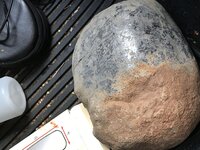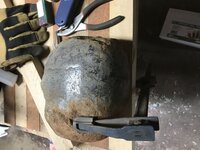cmart63
Jr. Member
- Aug 11, 2013
- 36
- 37
I really would appreciate your ideas, opinions, and thoughts regarding the item in the photos. I believe it to be a revolutionary war cannon ball, but really have no idea. I have literally found over 100 of these type items (larger and smaller) on our land. Our family was granted this land in 1814 for service in the Revolutionary War. (This was Cherokee-Creek Indian land -so maybe ...?)
I can not get these finds out of my mind -what little mind that I have remaining. Hopefully, this land will stay in my family for many more years. PLEASE let me know what you think. PM me and I will tell you what part of NE Georgia I am finding all of these items.
Thank you for any help that you may provide.
Carl


I can not get these finds out of my mind -what little mind that I have remaining. Hopefully, this land will stay in my family for many more years. PLEASE let me know what you think. PM me and I will tell you what part of NE Georgia I am finding all of these items.
Thank you for any help that you may provide.
Carl


Last edited:



 LOL i know its a long shot. could you cut into it somehow to see if its metal or what?
LOL i know its a long shot. could you cut into it somehow to see if its metal or what?

